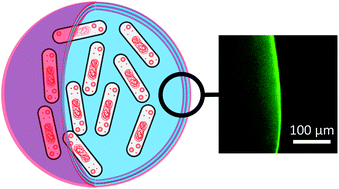Some years ago, I was a bit mystified as to the distinction
between prebiotics and probiotics.
These days, one can easily look them up on
Wikipedia, and find that prebiotics are meant to
encourage the growth of ‘good’ bacteria in the gut, while probiotics are supposed
to deliver the bacteria directly.
Prebiotics are generally soluble oligo- or
polysaccharides, known as dietary ‘fibre’, and one of the best sources of these
is chicory root.
 |  |
|
Chicory root and
flower | |
|
|
|
|
Alginate |
Chitosan |
Although these are both polysaccharides, they
have significantly different properties which allow them to work better in
harmony when passing through the stomach. Alginate is in general a very good
encapsulator, but it does not protect the microbes sufficiently from gastric
juice. Chitosan, at first sight, seems to labour under two disadvantages. It
is a known antimicrobial agent and is yet is degraded by microbial action,
especially by the enzyme chitosanase. (Paradox? Maybe one is the solid form,
the other in solution). However, if the inner layer of the capsule is alginate,
chitosan is very slow to diffuse in to the microbes, while chitosan ionically
bound to the alginate is attacked much more slowly by the enzyme.
* strictly speaking, colony-forming units
(CFU).
Bifidobacterium breve is commonly offered as a
probiotic supplement. The Wikipedia article
deals with the whole Bifidobacterium genus as a whole, but searching for
B. breve yields many results from people marketing probiotic
products, and as sources of information they might be biased, and generically
overlooking the problem of travel through the stomach. I doubt, though, if we
will see encapsulated bugs in ‘foodie’ products any day soon. But where someone
has a clinical condition involving imbalance of the intestinal microflora, this
might turn out to be a useful method of delivery.
So does this mean that
there is no point in consuming Yakult? That would depend on how directly the
bacteria were exposed to stomach fluid. The advice from one of the authors is
that the bacteria are most vulnerable when the stomach is empty and the pH is
low. So if you like Yakult, take it with
meals.
[1]
Journal of Biomedicine and Biotechnology; Volume 2011 (2011), Article ID 981214,
12 pages; doi:10.1155/2011/981214
Review Article: The Gut Microbiota and
Human Health with an Emphasis on the Use of Microencapsulated Bacterial Cells by
Satya Prakash, Catherine Tomaro-Duchesneau, Shyamali Saha, and Arielle
Cantor
[2] Journal of Materials Chemistry B, 2013, 1, 52: DOI:
10.1039/c2tb00126h
Layer-by-layer coating of alginate matrices with
chitosan–alginate for the improved survival and targeted delivery of probiotic
bacteria after oral administration
Michael T. Cook, George Tzortzis, Vitaliy
V. Khutoryanskiy and Dimitris Charalampopoulos


 Mechnikov also developed a theory that aging is caused by toxic
bacteria in the gut and that
Mechnikov also developed a theory that aging is caused by toxic
bacteria in the gut and that 




Comments